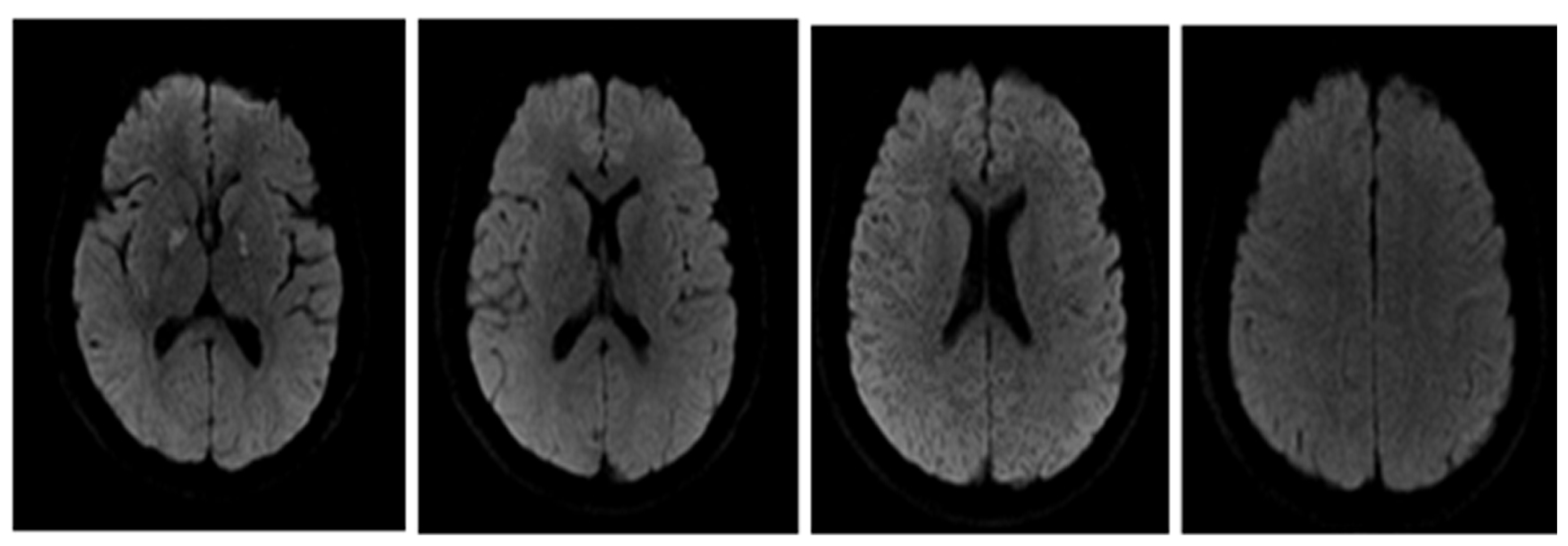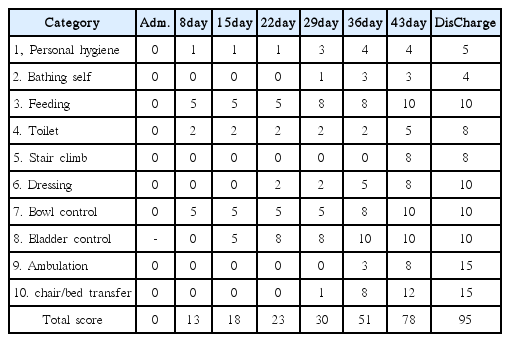References
1. Prockop LD, Chichkova RI. Carbon monoxide intoxication: an updated review. J Neurol Sci 2007;262(1–2):122–30.
2. Lee JY, Song JH, Lim BS. Characteristics of suicide by carbon monoxide poisoning in Korea. J Korean official statistics 2016;21(1):57–83.
3. Weaver LK. Carbon monoxide poisoning. N Engl J Med 2009;360:1217–25.
4. Wolf SJ, Lavonas EJ, Sloan EP, Jagoda AS. Clinical Policy: Critical Issues in the Management of Adult Patients Presenting to the Emergency Department with Acute Carbon Monoxide Poisoning. Annals of Emergency Medicine 2008;51:138–152.
5. Kim W, Lee DH, Suh KY. A Clinical Study of Delayed Sequelae in Carbon Monoxide Intoxication. J Korean Neuropsychiatric Assoc 1987;26(4):675–88.
6. Lo Pardo D, Amedola D, Senatore G, Damiano A, Pezzuti G, Pugliese N, et al. Delayed neuropsychiatric syndrome after carbon monoxide poisoning: inclusion of hyperbaric oxygen therapy in the recovery protocol. Emergency Care Journal 2016;12(5675):28–30.
7. Kim DE, Kim KH, Kim JS, Shin GC, Lee WC. A Case of Delayed encephalopathy after Acute Carbon Monoxied Intoxication. J Korean Oriental Med 2001;22(3):169–178.
8. Park JY, Ko JC, Baek EG, Jun CY, Han YH, Ha KS. A Case of Delayed Postanoxic Encephalopathy after Carbon Monoxide Intoxication. J Int Korean Med 2002;:97–102.
9. Kim YY, Kim JY, Cho HY, Cho SH, Hwang WW. A Case Study of Patient with Delayed Post-Anoxicd Enchphalopathy Improved by Korean Traditional Treatment, Especially Jowiseung-chungtang. J of Oriental Neuropsychiatry 2008;19(3):205–17.
10. Roh SH, Park SH, Kim MS, Ok HJ, Kwon DI, Sun JJ. A Clinical Case Study of a Delayed Neuropsychic logical Sequelae Patient with Abnormal Brain Waves due to CO Intoxication. J Int Korean Med 2014;:233–239.
11. Zhang J, Piantadosi CA. Mitochondrial oxidative stress after carbon monoxide hypoxia in the rat brain. Journal of Clinical Investigation 1992;90( 4):1193–9.
12. Thom SR, Elbuken ME. Oxygen-dependent antagonism of lipid peroxidation. Free Radic Biol Med 1991;10(6):413–26.
13. Kim JH, Chang KH, Song IC, Kim KH, Kwon BJ, Kim HC, et al. Delayed encephalopathy of acute carbon monoxide intoxication: Diffusivity of cerebral white matter lesions. AJNR Am J Neuroradiol 2003;24(8):1592–7.
14. Choi IJ, Oh YH, Kim GT. Original Articles: Magnetic Resonance Imaging for the Prediction of Delayed Neuro-psychiatric Sequelae in Patients with Carbon Monoxide Poisoning DNS. J Korean Soc Emerg Med 2013;24(2):164–73.
15. Parkinson RB, Hopkins RO, Cleavinger HB, Weaver LK, Victoroff J, Foley JF, et al. White matter hyperintensities and neuropsychological outcome following carbon monoxide poisoning. Neurology 2002;58(10):1525–32.
16. Jian-Fang Z, Qiming G, Hua S, Bin L, Yuxiu D, Maofeng L, et al. A positive Babinski reflex predicts delayed neuropsychiatric sequelae in Chinese patients with carbon monoxide poisoning. Biomed Res Int Epub May. 15. 2014;
17. Beppu T. TThe role of MR imaging in assessment of brain damage from carbon monoxide poisoning: a review of the literature. AJNR Am J Neuroradiol 2014;Apr. 35(4):625–31.
18. Chang DC, Lee JT, Lo CP, Fan YM, Huang KL, Kang BH, et al. Hyperbaric oxygen ameliorates delayed neuropsychiatric syndrome of carbon monoxide poisoning. Undersea Hyperb Med 2010;Jan–Feb. 37(1):23–33.
19. Park HK, Joo SH, Choi JW, Park HS. A case of delayed encephalopathy of carbon monoxide intoxication. J Korean Neuropsychiatr Assoc 2013;52:463–467.
20. Lee SH, Shin KH, Kim JU. Effect of Seven Points of CVA Acupuncture on Cerebral Blood Flow. J Acupunct Res 2004;21(3):83–97.
21. Lee SW, Yun JM, Son JW, Kang BG, Park SM, Yun HJ, et al. The Effect of Electroacupuncture on Upper-Extremity Spasticity of Stroke Patients. J Int Korean Med 2007;28(3):492–501.
22. Yoo YD, Kim SY, Min SG. Effects of Electroacupuncture and Therapeutic Exercise on Skeletal Muscle in the Ischemic Stoke Rats. J Korean Society of Physical Therapy 2006;18( 3):9–21.
23. Heo J. (Remark by Jinjupyo). Donguibogam 2nd rev. edth ed. Seoul: Bubinbooks; 2009. p. 1026.
24. Kim LD, Yun SP, Lee SH, Kim EJ, Na BJ, Jung DW, et al. Effects of Uwhangchungsim-won (Niuhuangqingxin-yuan) on Systemic Blood Pressure, Pulse Rate, Cerebral Blood Flow, and Cerebrovascular Reactivity in Humans. J Int Korean Med 2004;25(3):440–50.




